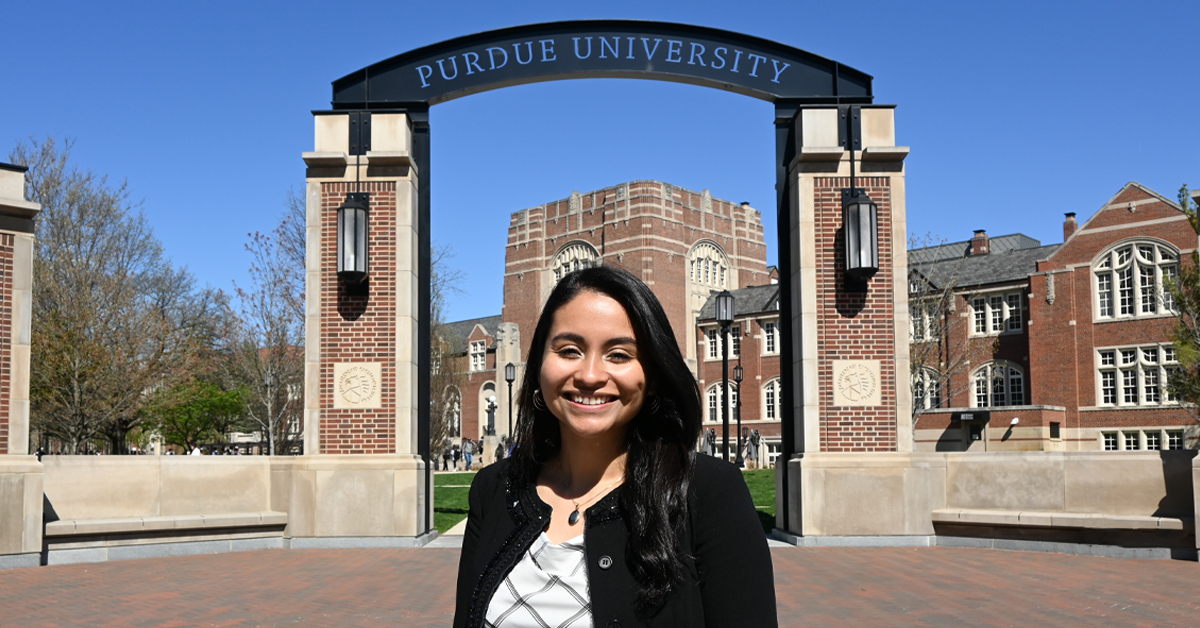
Interest in international trade research leads graduate student to Purdue’s Center for Global Trade Analysis
Lauren Benavidez grew up in a small town in northern Nicaragua, known for its agricultural production. She was always fascinated by numbers and as she learned more, desired to combine her passion for numbers with a career that relates back to her home country.
Lauren decided to take a risk and leave Nicaragua to pursue a bachelor’s in Agribusiness Management at Zamorano University in Honduras. She then traveled to Kansas State University to earn a master’s with a focus on International Trade and Food Security.
Her interest in international trade continued to grow and lead Lauren to Purdue, specifically to the Agricultural Economics Department’s Center for Global Trade Analysis, to pursue her Ph.D. studies. The center is well-known for its Global Trade Analysis Project model, or the GTAP Model for short.
During her first semester, Lauren was able to immediately start working with the center under their director, Dr. Dominique van der Mensbrugghe, collecting and analyzing macroeconomic data from different sources, such as the World Bank and the United Nations. Her goal was to initiate the collection of macro data for version 12 of the GTAP model by creating a tool that facilitates the collection and the cleaning process of the data.
“I spent a great portion learning about GTAP’s data collection process,” said Lauren. “They obtain input/output tables from different collaborators from 65 sectors and 141 countries/regions, and I learned how GTAP researches evaluate this data and translate it into the model.”

Now in her second semester, Lauren is working on a different topic with researchers from the center, and even though the topic is completely new to her, it’s awoken her interest.
“I just started a new project this Spring working with Dr. Farzad Taheripour on climate change and land use research. Specifically, we’re looking into the emissions related to land use change that is destined to the production of biofuels. My primary tasks have been to study the models related to the calculation of emission factors, data related to climate change and land use from sources such as Intergovernmental Panel on Climate Change, and multidisciplinary papers from environmental research.”
“While much of this is new to me, the knowledge I’m acquiring can be applied into my research focus, specifically those related to food security and climate change, so there’s value to taking on this opportunity and immersing myself into a new research area.”
Given the new information, she’s thankful to fellow Ph.D. graduate student, Ehsanreza Sajedina who helped her get up to speed.
“When I started to study the model that calculates emission factors, it required deep reading, analysis, and a good understanding of the model’s functionality. Dr. Taheripour suggested that I reach out to Ehsanreza, who had experience working on the model. He has helped me better understand how the model works, topics related to the data the model uses, and how to make additions to it, all of which have been very helpful.
